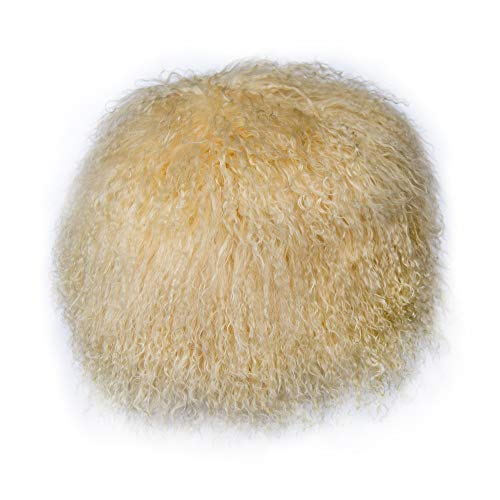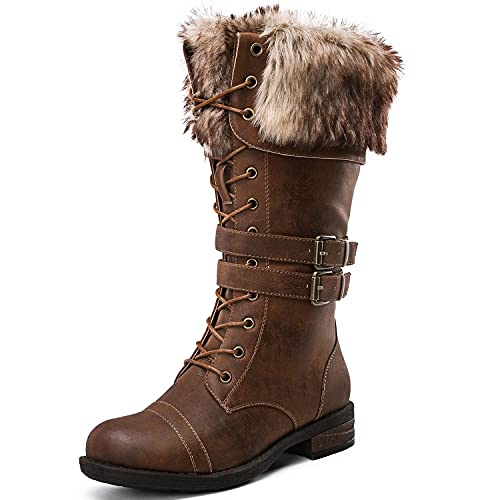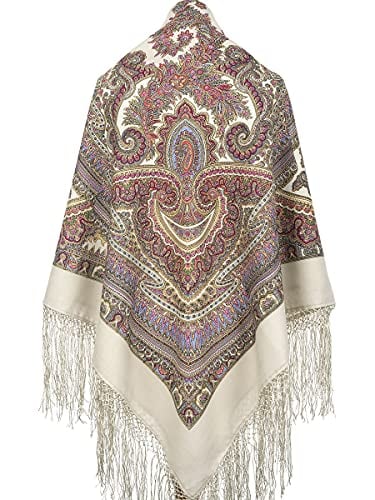Ever wondered what people wore in old Russia? You’re not the only one. Many are curious about how clothes show status, culture, and daily life.
You might want to learn for a school project, a costume idea, or just because it’s interesting. No worries — we’ll make it easy to understand.
We know this topic well and will explain it clearly.
In this article, you’ll learn:
- What men and women wore in the past
- The meaning behind different styles and colors
- How clothing changed over time in Russia
Keep reading to explore this part of Russian history.
By the end, you’ll have a clear picture of what traditional Russian clothing looked like — and why it mattered.




1. History of Traditional Russian Clothing

Traditional Russian clothing has deep roots in the country’s history, reflecting its climate, social structure, and cultural influences. Before the 18th century, Russians wore garments made from linen, wool, and fur to withstand harsh winters.
Peasants wore simple tunics, while nobility dressed in richly embroidered robes and silk garments. Common traditional pieces include the sarafan (a long jumper dress for women) and the kosovorotka (a high-collared shirt for men).
During Peter the Great’s reign, Western European fashion was introduced, especially among the upper class, blending with traditional styles. Over time, traditional attire became symbolic of Russian folk identity.
Today, these garments are mainly worn during festivals, folk performances, and national holidays to celebrate Russian Culture.

2. Russian National Costume
Russian National Costume for Women

Russian traditional female clothing unveils a rich cultural heritage and enduring elegance. From the graceful sarafan, often embroidered, to the intricate kokoshnik headdress adorned with jewels, each piece reflects a fusion of tradition and style, embodying the wearer’s identity and status.
Throughout history, Russian women have worn attire for self-expression and to signify societal roles. The sarafan symbolizes modesty and femininity, while the kokoshnik denotes wealth and status for brides and noblewomen.
From villages to aristocracy, these garments signify cultural pride and individuality. Today, Vintage Russian clothing for women enchants with its timeless beauty and cultural significance, honoring the nation’s heritage, whether for special occasions or daily wear.
Russian National Costume for Men
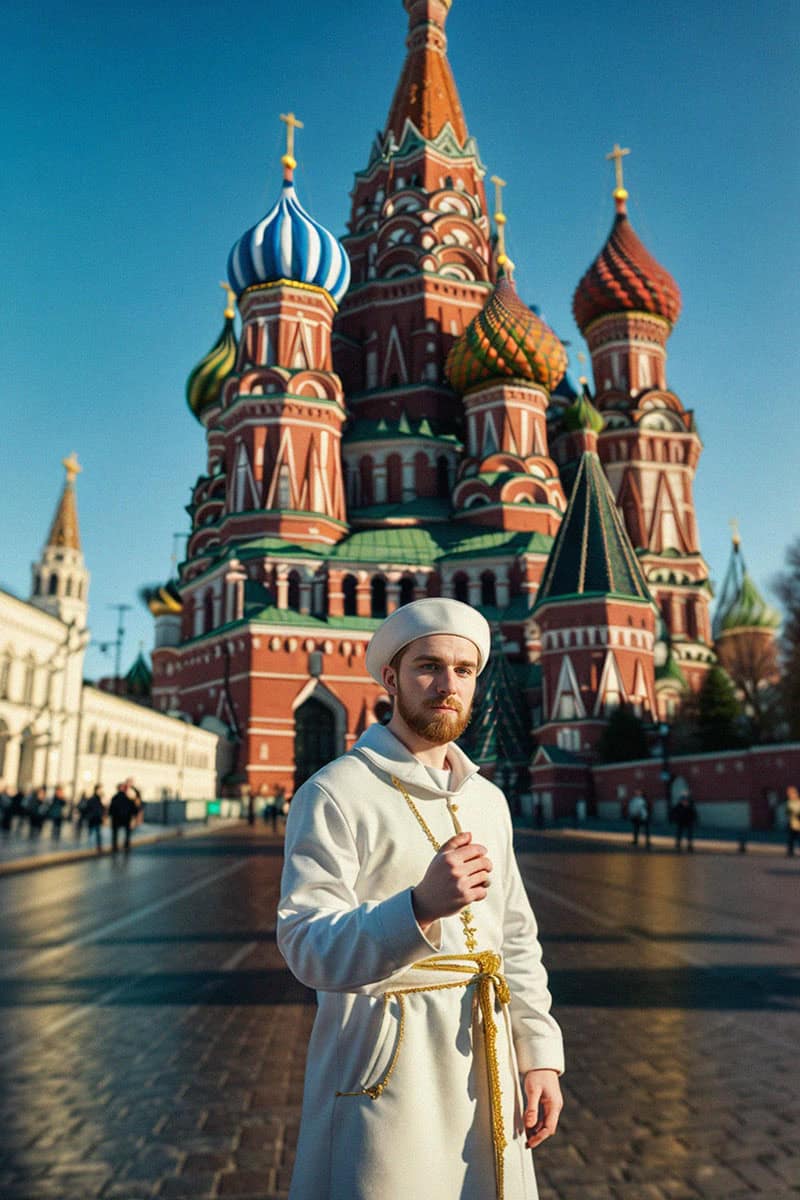
Russian traditional male clothing reveals a rich heritage and enduring style. From the iconic Kosovorotka, a loose-fitting shirt with a traditional collar, to the elegant caftan, each piece embodies a unique blend of tradition and masculinity, reflecting the wearer’s identity and social status.
Throughout history, Russian men have worn attire reflecting self-expression and societal roles. The Kosovorotka, known for its practical design, represents resilience, while the caftan, with its rich fabrics and ornate details, signifies nobility and authority.
From villages to cities, these pieces signify cultural pride and individuality, captivating with their timeless allure and honoring Russia‘s heritage at formal or casual events.
3. Notable Vintage Russian Outfits
The Sarafan
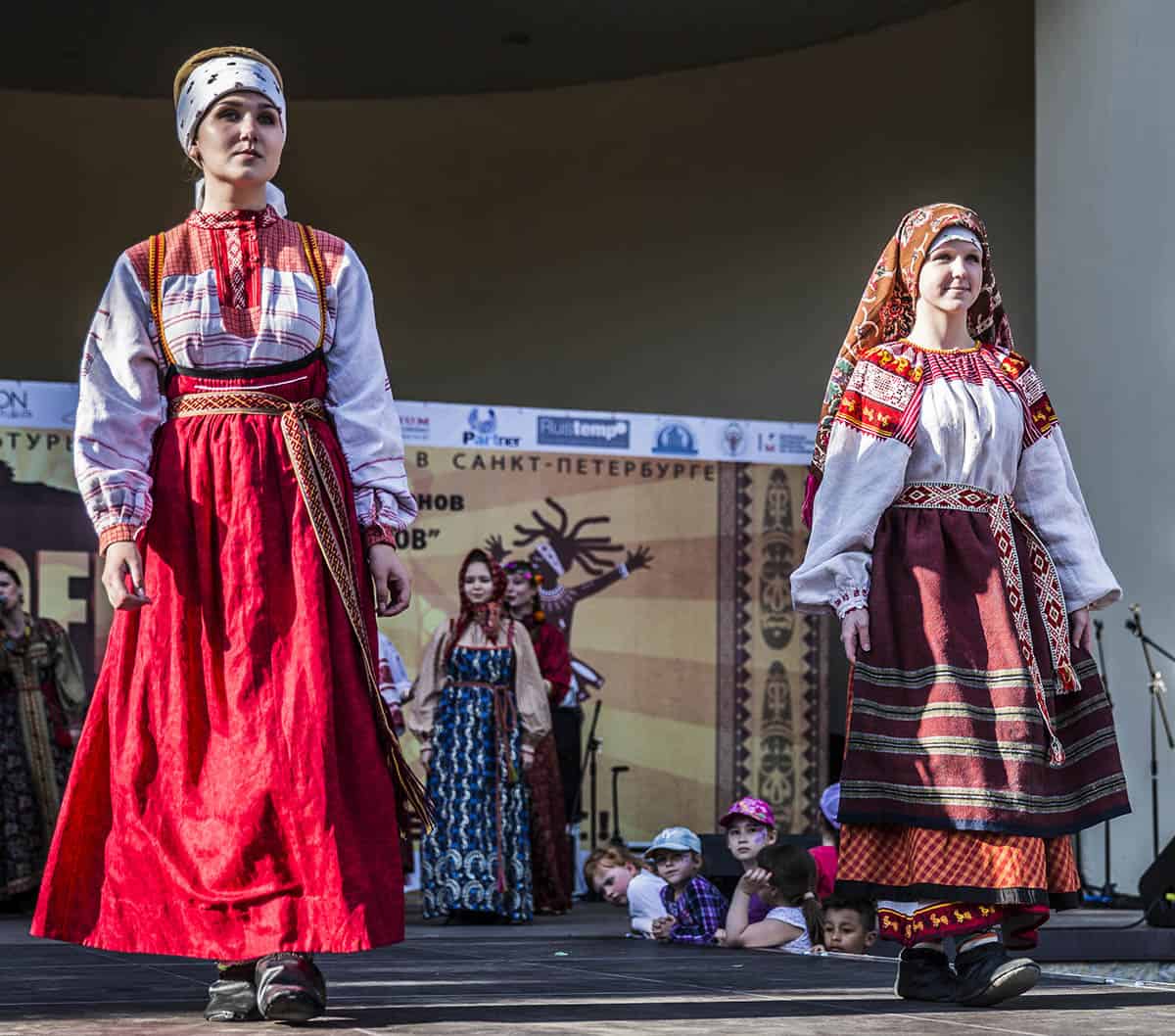
The sarafan, a fundamental piece of traditional Russian outfits, epitomizes elegance and femininity. Characterized by its sleeveless design and vibrant colors, it is often worn by women with a blouse underneath.
Crafted from luxurious materials such as brocade and velvet, as well as silk, linen, and even fur, the sarafan boasts a rich variety of textures and patterns.
Some sarafans are adorned with intricate embroidery, while others feature delicate lace or decorative trimmings made from birch bark. This attire exudes modesty and cultural heritage, serving as a versatile option for various occasions.
Whether fashioned with a fitted bodice and flowing skirt or a more structured silhouette, the sarafan reflects the variety of Russian fashion while maintaining its timeless charm.
Kokoshnik

The kokoshnik is a quintessential element of national Russian clothing for women, revered for its intricate beauty and cultural significance.
This elaborate headdress, exclusively worn by women, is crafted with meticulous detail, featuring delicate embroidery, beads, and sometimes pearls, meticulously applied to luxurious materials such as brocade, silk, or velvet.
Varied in design, kokoshniks range from bold patterns to delicate elegance, suiting different occasions and reflecting the wearer’s style.
For weddings and celebrations, the kokoshnik symbolizes femininity, grace, and tradition in Russian culture, cherished for its intricate craftsmanship and beauty.
Ushanka
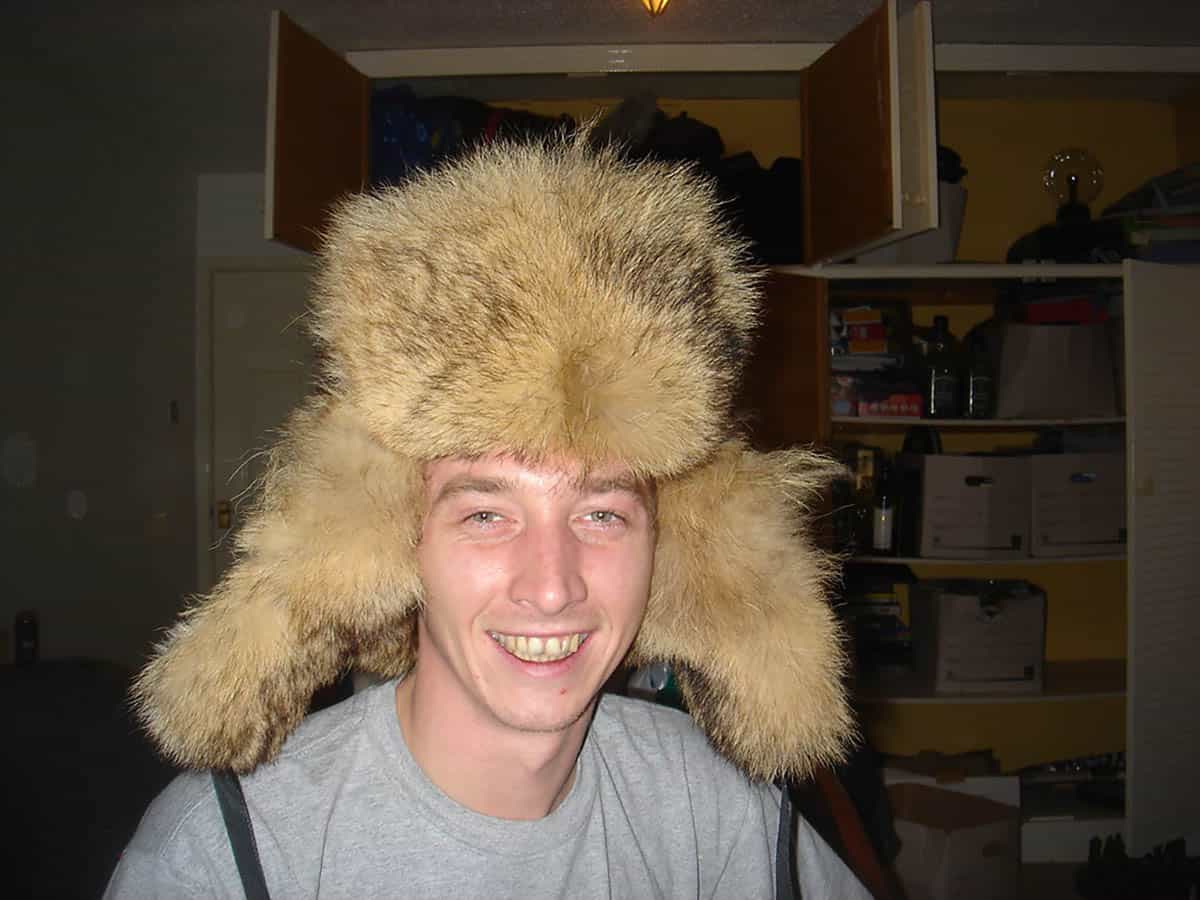
The Ushanka, a hallmark of Russian winter attire, is a fur hat with ear flaps, indispensable for colder climates. Crafted with care, it provides warmth and protection from harsh weather, often using high-quality furs like fox, mink, or rabbit.
For men, the Ushanka features a sturdy exterior and plush fur lining, offering both functionality and style in the winter cold. Its ear flaps can be worn down for extra warmth or fastened up for a casual look.
Similarly, women’s Ushankas come in various designs, from classic styles with fur trims to more embellished versions with embroidery or jewels.
Valenki

Valenki, felt boots traditionally worn in Russia during the winter months, are an essential part of cold weather attire. Crafted from layers of wool felt and meticulously shaped to fit the foot, Valenki provides warmth and insulation against freezing temperatures.
For men, Valenki typically features a simple yet sturdy design, with thick soles and high shafts to keep feet warm and dry in snowy conditions. They are often paired with thick wool socks for added comfort and insulation.
Similarly, women’s Valenki comes in various styles, from plain and practical to more decorative versions. Some may be adorned with embroidery or fur trim, adding a touch of personal flair.
Kosovorotka
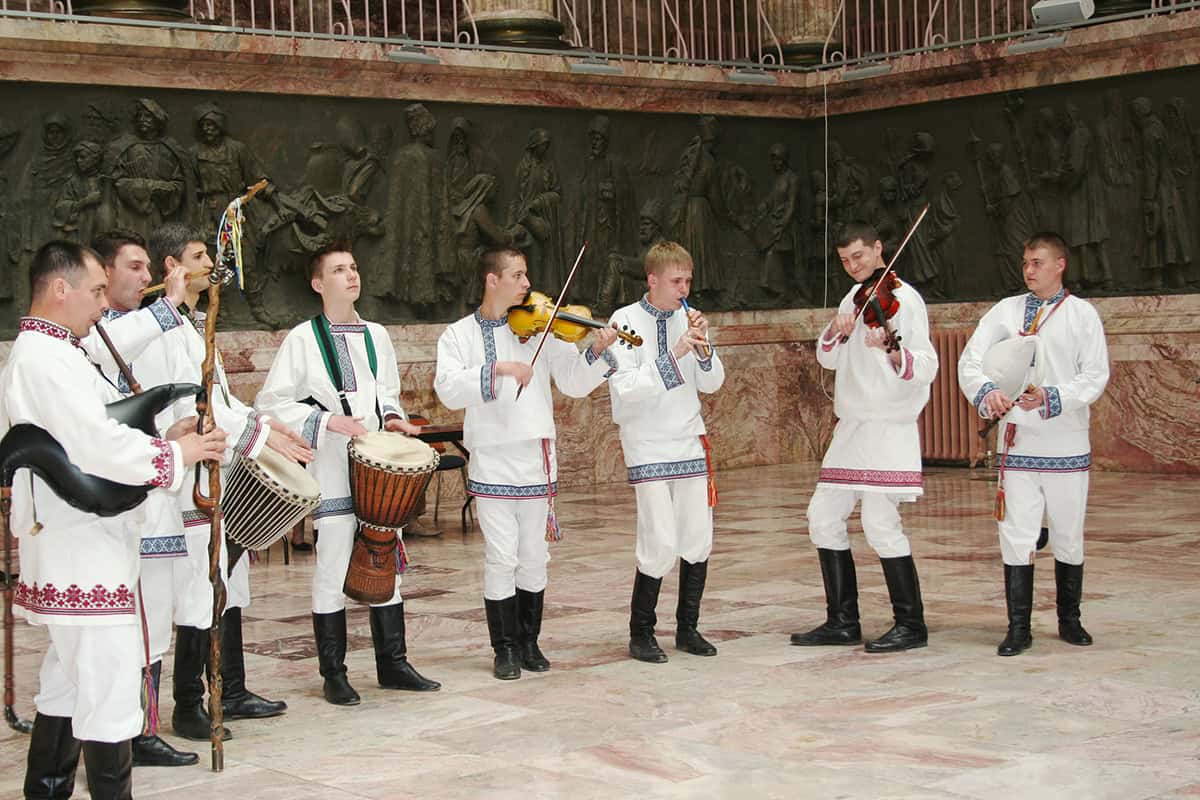
The Kosovorotka, a fundamental element of Russian outfits for men, is a traditional shirt distinguished by its collarless neck and buttoned chest.
Crafted from durable fabrics such as linen or cotton, it exudes simplicity and practicality, providing comfort and ease of movement for everyday wear.
For men, the Kosovorotka typically features a loose fit and long sleeves, further enhancing its functionality. Its collarless design and buttoned chest allow for effortless dressing and ventilation in warmer weather.
Pavlovo Posad Shawl
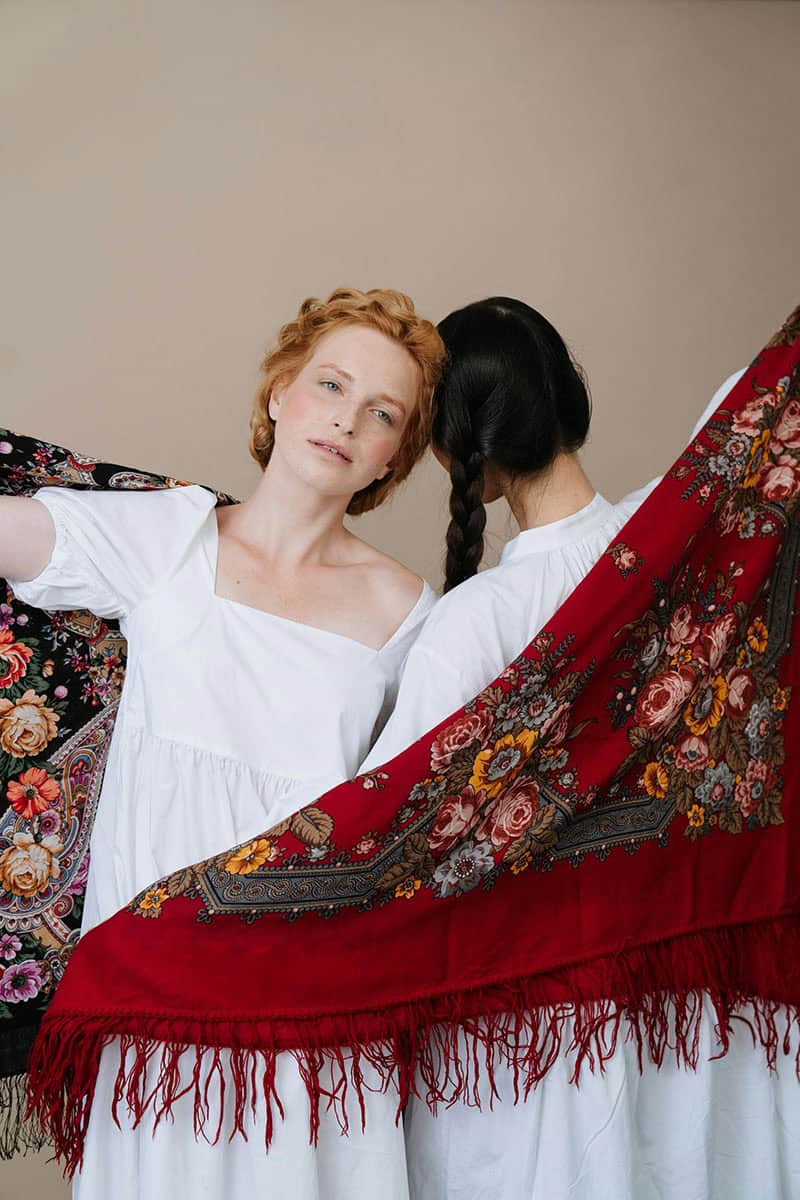
Pavlovo Posad Shawls, originating from the historic town of Pavlovo Posad, are emblematic of Russian craftsmanship and culture. These shawls are renowned for their vivid colors and intricate patterns, often featuring elaborate floral designs that showcase the natural beauty of Russia.
Crafted with meticulous attention to detail, each Pavlovo Posad Shawl is made from fine wool or silk, ensuring both durability and elegance.
Bast Shoes (Lapti)

Bast Shoes (Lapti), integral to Vintage Russian clothing, epitomize the resourcefulness and resilience of rural life. Crafted from woven birch bark or bast fibers, these shoes embody simplicity and practicality, ensuring durability in rugged environments.
Bast Shoes (Lapti) offer functionality and durability for both men and women during agricultural labor or outdoor tasks. Their woven design ensures flexibility and breathability, while a simple slip-on style with natural material straps or laces provides a secure fit.
Gored Dress (Gorodovoy Platok)

The Gored Dress (Gorodovoy Platok) is a cherished symbol of traditional Russian costume, known for its flared skirt and intricate details. Crafted from materials like cotton, linen, or silk, it features delicate embellishments such as ornate embroidery and lace, embodying the elegance of Russian attire.
Worn by women of all ages and backgrounds, it exudes timeless femininity and grace, making it a popular choice for cultural gatherings and special occasions.
Accessories

The Poyas, a cherished accessory in Russian culture, is intricately embroidered or decorated and worn around the waist, adding elegance to traditional outfits.
Khokhloma, originating from the Volga region, is known for its vibrant colors and intricate floral motifs, often seen on wooden objects like spoons, plates, and jewelry.
Traditional Russian jewelry features different styles and materials, each piece narrating the country’s rich history and traditions.
See Also Russian New Year Traditions
4. Regional Russian Traditional Attire
Traditional Costume in Northwestern Russia

Influenced by Baltic and Scandinavian aesthetics, national costume in Northwestern Russia reflects a fusion of cultural elements unique to the region. The garments embrace varied patterns, colors, and silhouettes, embodying the rich heritage of cross-cultural exchanges.
Wool and linen, common materials in Northwestern Russian dress, provide warmth and durability essential for the region’s colder climate. Traditional clothing like sarafans and embroidered tunics feature intricate designs inspired by Baltic and Scandinavian influences.
Complementing the attire are accessories such as woven belts and embroidered headscarves, adding both decorative flair and functional utility. These accessories often feature motifs from nature and folklore, symbolizing cultural connections.
Traditional Costume in Southern Russia

Traditional dress in Southern Russia reflects a rich blend of cultural influences from the diverse peoples and traditions of the Caucasus. Garments showcase intricate patterns and styles, embodying interactions among Russian, Caucasian, and Central Asian cultures.
Southern Russian attire utilizes silk, wool, and cotton fabrics, offering comfort and adaptability to the region’s climate. Notable pieces like the Chokha and papakha feature elaborate embroidery inspired by the Caucasus.
Accessories play a significant role in Southern Russian dress, with items like belts and headdresses adding symbolic and aesthetic value. These embellishments often incorporate motifs emblematic of the Caucasus region.
Traditional Costume in Siberia and the Far East

Traditional dress in Siberia and the Far East of Russia prioritizes practicality for coping with extreme climates. Garments are crafted from durable materials like fur, wool, and felt, providing essential insulation against the region’s frigid temperatures.
Layered construction is a hallmark of Siberian and Far Eastern clothing, offering versatility to adjust to changing weather conditions. Coats, hats, and boots are staple pieces, each serving a specific function in protecting wearers from the elements.
Accessories such as fur-lined hats, mittens, and coats further enhance warmth and insulation. These items reflect the cultural significance of fur in the region, valued for its practicality and resilience in harsh environments.
Traditional Costume in the Volga Region

In the Volga Region of Russia, traditional clothing reflects a blend of Tatar and Turkic cultures, showcasing a rich fusion of styles and influences. Garments in this area feature a unique combination of Tatar and Russian elements, representing cultural traditions.
Materials like silk, wool, and cotton are prevalent in traditional Volga attire, chosen for practicality and cultural significance. These fabrics often feature intricate embroidery, highlighting the region’s rich textile heritage.
A prominent feature of traditional Volga dress is the Chakchak, a Tatar headdress adorned with colorful patterns. The Chakchak symbolizes cultural identity and heritage.
Long, flowing robes are characteristic of traditional clothing in the Volga Region, often featuring vivid colors and intricate patterns. These garments express cultural pride and social status.
See Also Traditional Bulgarian Clothing
5. Pattern of Russian Attire

Traditional Russian clothing reflects a rich array of patterns and textures, each telling a story of the country’s cultural depth. From the Sarafan’s delicate embroidery to the robust textures of the Ushanka fur hat, these elements mirror Russia’s historical narrative.
Floral designs, often inspired by nature, grace fabrics like brocade and silk, while intricate patterns adorn accessories like the Pavlovo Posad shawl.

Traditional Russian Clothing: A Recap
Traditional Russian clothing epitomizes the nation’s rich cultural heritage. From the intricate embroidery of the Kosovorotka to the vibrant patterns of the Pavlovo Posad shawl, these garments are a reflection of Russian identity and tradition.
In modern Russia, traditional costume connects the present to the country’s storied past. Whether worn for special occasions or daily wear, these outfits are valued for their craftsmanship and symbolic importance.
Vintage Russian clothing showcases shared traditions across different regions and communities. By preserving and honoring these garments, Russia pays tribute to its cultural roots while adapting to contemporary life.



